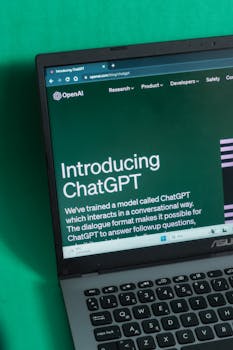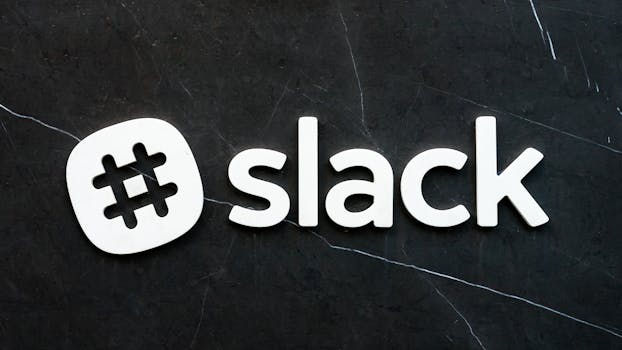Unlocking Student Success: The Top 10 AI Tools Every Student Needs in 2025
As we step into 2025, the educational landscape continues to evolve rapidly, driven by advancements in artificial intelligence (AI). Students now have access to a variety of tools that can enhance their learning experiences, streamline study habits, and foster personal growth. Here’s a look at the top ten AI tools that every student should consider using to unlock their full potential.

Relevant visual content related to AI technology
1. Grammarly
Known for its grammar and style checking capabilities, Grammarly has evolved to offer deeper writing insights. It uses AI to analyze text, providing suggestions not only for grammar but also for tone and clarity. This tool helps students refine their writing skills by enabling them to create polished essays and reports.

Relevant visual content related to Grammarly
2. Khan Academy
Khan Academy is an educational platform that leverages AI to personalize learning. By assessing a student’s current knowledge level, it offers customized practice exercises and instructional videos. This targeted approach fosters an effective learning environment tailored to individual needs.

Relevant visual content related to Khan Academy
3. Coursera
Coursera provides students with access to a vast library of courses from top universities around the world. Its AI-driven recommendation system suggests courses based on a student’s profile and interests, making lifelong learning more accessible and tailored.
Relevant visual content related to Coursera
4. Quizlet
Quizlet has incorporated AI to improve study sessions. Its adaptive learning technology fine-tunes flashcard sets and quizzes based on the user’s previous performance, ensuring they focus on what they need to learn most. This makes studying more efficient and engaging.

Relevant visual content related to Quizlet
5. Duolingo
Learning a new language is made easy with Duolingo. Its AI algorithms personalize lessons to fit each learner’s pace and proficiency. The gamified approach keeps students motivated and engaged, making language acquisition a fun experience.

Relevant visual content related to Duolingo
6. Notion
Notion is an all-in-one workspace that incorporates AI features to enhance productivity. Students can organize notes, manage projects, and collaborate with peers seamlessly. Its AI capabilities include task automation and intelligent templates, helping students stay on top of their academic responsibilities.

Relevant visual content related to Notion
7. ChatGPT
The conversational AI tool, ChatGPT, can assist students in brainstorming ideas, generating content, or even studying for exams. With its ability to understand and respond to queries, it serves as a valuable resource for enhancing learning and providing instant answers.

Relevant visual content related to ChatGPT
8. Otter.ai
Otter.ai uses AI to transcribe spoken words into text in real-time. This tool is particularly beneficial during lectures or group discussions, ensuring that students can focus on understanding the material rather than frantically taking notes. The transcripts can also be shared for collaborative studying.
Relevant visual content related to Otter.ai
9. Microsoft’s OneNote
Microsoft’s OneNote integrates AI to enhance the note-taking experience. With features like handwriting recognition and searchable text within images, students can easily organize their notes and find crucial information when needed. This adaptability makes it an essential tool for students across various fields.
Relevant visual content related to OneNote
10. Slack
While primarily a communication tool, Slack has integrated AI features that facilitate collaboration among students. With its ability to organize discussions by topics and integrate various apps, it promotes seamless group work and project management, making teamwork more efficient.

Relevant visual content related to Slack
Conclusion
The integration of AI tools in the educational sector is transforming how students learn, study, and collaborate. By utilizing platforms like Grammarly, Khan Academy, and ChatGPT, students can enhance their understanding and efficiency significantly. As these technologies continue to evolve, staying informed and adapting to new tools will be essential for achieving academic success in 2025 and beyond.
FAQs
1. What is AI in education?
AI in education refers to the integration of artificial intelligence technologies to enhance the learning experience, providing personalized instruction, automating administrative tasks, and offering intelligent tutoring systems.
2. Are these AI tools free to use?
Many AI tools like Grammarly, Khan Academy, and Duolingo offer free versions with optional premium features. Pricing varies based on the service and its complexity.
3. How can AI tools improve writing skills?
AI writing tools like Grammarly analyze text for grammar, punctuation, and style, providing real-time feedback and suggestions that help users improve their writing abilities over time.
4. Can AI tools replace traditional learning methods?
While AI tools can enhance and support traditional learning methods, they are not designed to replace them. Rather, they complement existing educational techniques by providing personalized, instant feedback and resources.
5. How do I choose the right AI tool for my studies?
Consider your specific needs, subjects of interest, and preferred learning styles. Explore various tools, read reviews, and try free versions to see which one best suits your academic requirements.